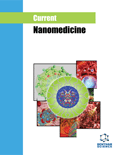To find the most relevant journal, please insert appropriate keyword to facilitate search.
Search Results: CNM
Current Nanomaterials
ISSN: 2405-4615 (Print)
eISSN: 2405-4623 (Online)
This inter-disciplinary journal will be of interest to scientists in both the physical and biomedical /pharmaceutical related disciplines in nanoscience research.
Editor-in-Chief:
National University of Singapore
Kent Ridge
Singapore
Indexed in:
Portico, Scopus, EI Compendex, OpenAire, Ulrich's Periodicals Directory, Scilit, QOAM, JournalTOCs, J-Gate, Google Scholar, Dimensions, CNKI Scholar, Chemical Abstracts Service/SciFinder, Cabell's Directory/Journalytics, British Library... View all
Special Issues With Active Call for Papers
Nano-Enabled Technologies for Pharmaceuticals and Advanced Biomaterials in Healthcare Science
Nanotechnology is revolutionizing multiple fields, including healthcare, pharmaceuticals, and advanced biomaterials, by enabling the development of highly efficient, precise, and scalable nanoscale solutions. This thematic issue aims to explore cutting-edge advancements in nano-enabled drug delivery, vaccines, theranostics, nanomedicine, nanofabrication, nanostructured biomaterials, and bioinspired nanotechnology. The convergence of nanoscience with medicine and biomaterials engineering has unlocked new opportunities for targeted therapeutics, diagnostics and functional nanomaterials, with significant implications for both preclinical and clinical applications. This thematic... see more
Nanomaterials: Processing, Characterization, and Applications
The Special Issue aims to foster a collaborative environment where researchers, professionals, scholars, and academicians can disseminate the latest advancements in various Nanomaterials fields. It is themed "Nanomaterials: Processing, Characterization, and Applications", and will bring to light the role of engineering disciplines in driving nanomaterials processing, characterization, and applications. see more
“Recent Advances in Design, Characterizations, Applications, and Future Perspective of Smart Nanomaterials”
Smart materials are the family of materials (hydrogels, nitinol, electroactive polymer, graphene structures, carbon-metal nanohybrids, and many more) that represent their significant electrical, catalytic, thermal, optical, mechanical, and magnetic properties. There are various numbers of categorized smart nanomaterials reported so far, such as thermoresponsive, piezoelectric, electrochemical-responsive, magneto-responsive, light-responsive, pH-responsive, and enzyme-responsive. These smart nanomaterials possess excellent properties that can be controlled and engineered by regulating external factors such as atmospheric pressure, humidity content, temperature, biochemical... see more
Recent Advances in Nanomaterials: Modeling, Simulation, Machining and Characterization
This special issue covers the vast domain of the advanced modeling and simulation of various nanomaterials and their processing and structures governed by the laws of mechanics. The emphasis is on advanced and innovative modeling approaches and numerical strategies. The main objective is to describe the actual physics of large systems with complicated geometries as accurately as possible using complex, highly nonlinear and coupled multiphysics and multiscale models and carry out simulations with these complex... see more
